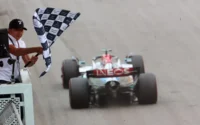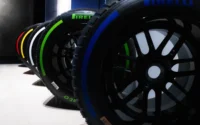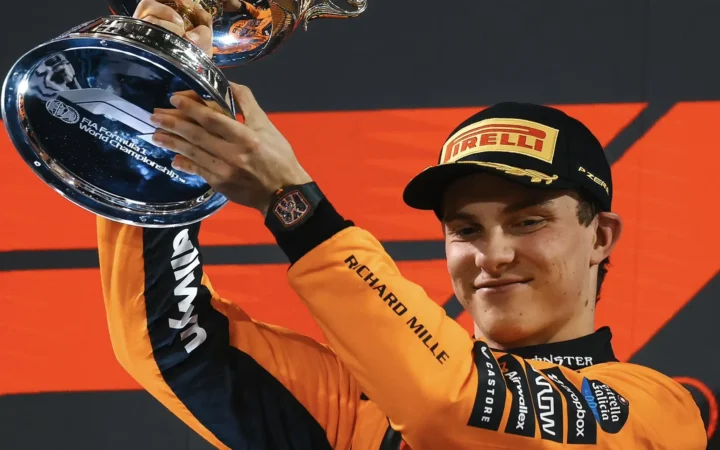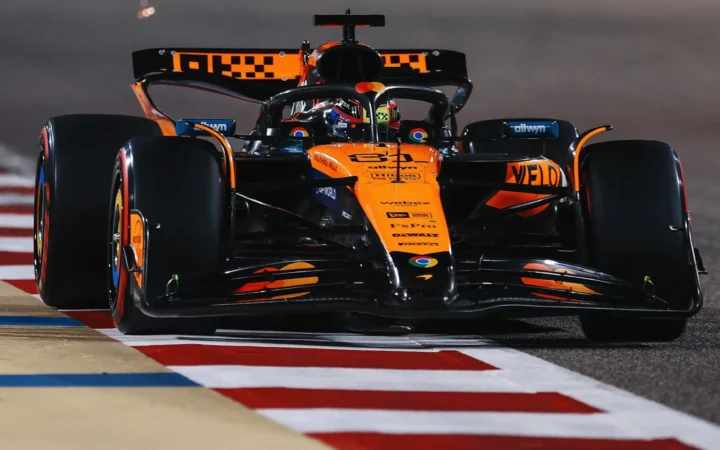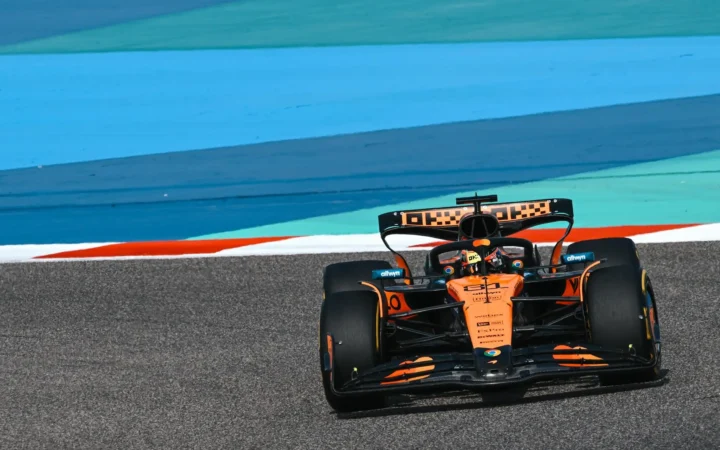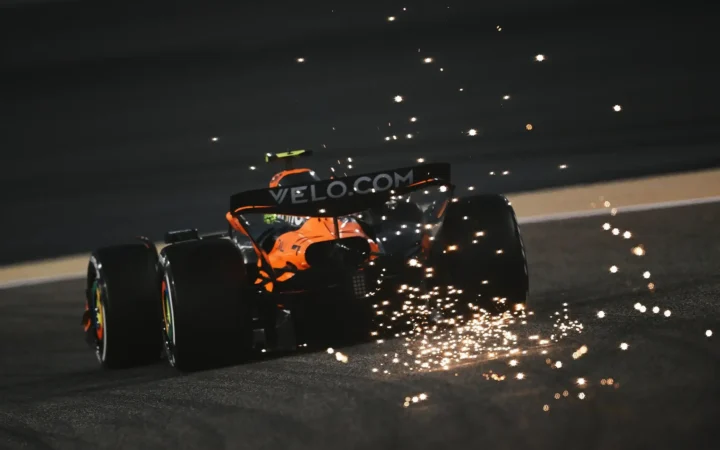Sprint races are a format adopted across several racing series, but its significance for Formula 1 is amplified by its inclusion in the Formula 2 race weekends that run alongside the F1 season.
What to know
- Like a regular Formula One Grand Prix race, the F1 Sprint Race has 20 drivers lining up on the grid.
- Sprint Races come in varying lengths but are significantly shorter than the main Grand Prix race, generally lasting up to 100km (62 miles) with a runtime of around 30 minutes.
- In the current format, F1 drivers who finish within the top eight positions in the Sprint event will earn championship points.
Highly anticipated, the F1 Sprint Race, previously trialled in 2021, is now a permanent fixture and is a thrilling addition that provides F1 fans at home and the track with more action-packed racing during the weekend while retaining the traditional time trial qualifying.
In 2023 and 2024, F1 made changes to Sprint Race weekends that included adjustments to the points system, the races they would feature at, and the effect on the teams’ cost cap rule. Whether you’re an F1 enthusiast or a newcomer, our guide will help you learn everything you need to know about an F1 Sprint Race weekend.
What is an F1 Sprint race, and how does it work?
Also known as an F1 Sprint, a sprint race is a condensed version of a regular Grand Prix that covers a shorter distance of 100km. Sprint races have been adopted across several racing series, including Formula 2, which runs alongside the Formula 1 season and promotes the future stars of the sport.
Starting in 2023, the F1 Sprint Race was scheduled to take place on Saturdays during Grand Prix weekends. This addition to the Formula One weekend provides an additional and exciting experience for fans included in their weekend Grand Prix ticket price.
Each Sprint Race has a qualifying session, like the main race, called a Sprint Shootout. While drivers can earn championship points in the Sprint Race, they no longer determine the grid for Sunday’s Grand Prix as they did in 2022. This had been a controversial rule for fans, drivers, and teams. Instead, F1 reintroduced a traditional qualifying session that took place on Friday afternoons, replacing the Second Practice Session.
Whether you’re a die-hard F1 fan or a casual Netflix fan, the F1 Sprint has added more on-track action and entertainment to a race weekend.
How many drivers are in an F1 Sprint Race?
Like a regular Formula One Grand Prix race, the F1 Sprint Race features the same 20 drivers who line up on the grid for every main race weekend.
How long is the F1 Sprint Race?
A few key differences exist between a Sprint Race and a regular F1 Grand Prix. While both events feature high-speed action, there are some unique aspects of each format that make them distinct.
Sprint Races come in varying lengths but are significantly shorter than the main Grand Prix race, generally lasting up to 100km (62 miles) with a runtime of around 30 minutes. And unlike an F1 race, there are no mandatory pit stops. This means tyre management and strategic decision-making are pivotal in determining the race’s outcome.
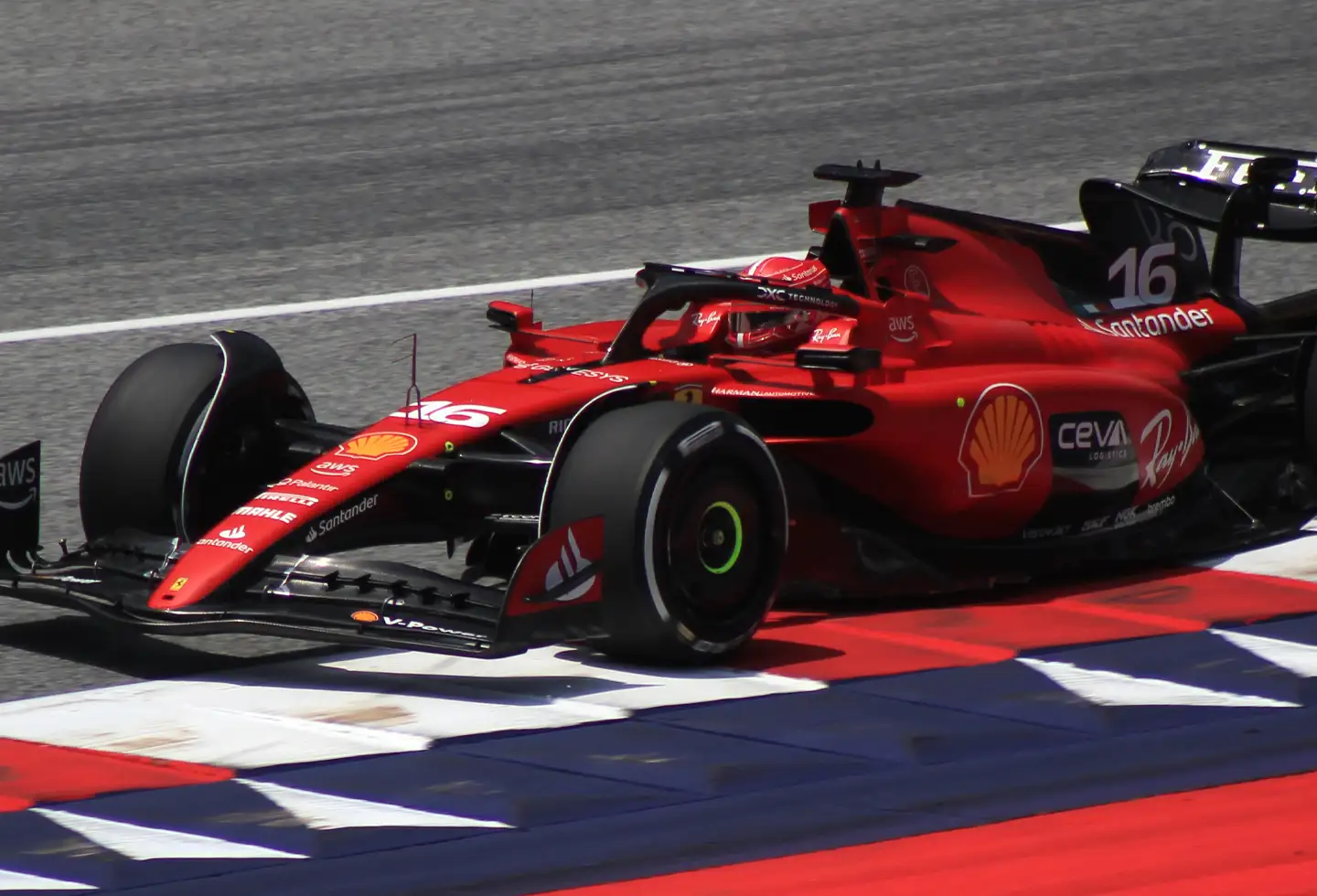
In a regular F1 race, drivers compete over a longer distance, typically around 300 kilometres or more. This allows for a more strategic approach to the race, still carefully managing their tyres and fuel consumption but over a longer period, and chances to change strategies as the race unfolds.
How does F1 Sprint qualifying work?
The Sprint Shootout, previously known as Sprint Qualifying, serves as the qualifying session determining the starting positions for the Sprint Race.
During the Sprint Shootout, each F1 driver has a limited time to set their fastest lap. The driver who sets the fastest lap time will start the Sprint Race from pole position. The second-fastest in second, the third-fastest in third, and so on until all 20 drivers are placed on the grid.
In 2023, the qualifying format changed, with the Sprint Shootout taking place on Saturday mornings or early afternoons, followed by the Sprint Race later in the day.
This format is similar to traditional qualifying, which has Q1, Q2, and Q3 of 18, 15, and 12 minutes. Sprint qualifying has SQ1, SQ2, and SQ3, each with shortened durations of 12, 10, and 8 minutes.
2023 Friday F1 Grand Prix Qualifying
| Session | Length | Drivers Eliminated |
|---|---|---|
| Q1 | 18 minutes | 5 Slowest |
| Q2 | 15 minutes | 5 Slowest |
| Q3 | 12 minutes | n/a |
2023 Saturday F1 Sprint Shootout Qualifying
| Session | Length | Drivers Eliminated |
|---|---|---|
| SQ1 | 12 minutes | 5 Slowest |
| SQ2 | 10 minutes | 5 Slowest |
| SQ3 | 8 minutes | n/a |
2024 Sprint Weekend Format
The format changed again for the 2024 season. The Sprint Shootout, and the only practice session of the weekend, took place on Friday after FP1. The Sprint Race and Grand Prix Race Qualifying followed on Saturday, and the main Grand Prix race on Sunday. The sessions, their length, and the elimination process remained unchanged.
| Day | First Session | Second Session |
|---|---|---|
| Friday | FP1 | Sprint Shootout – SQ1, SQ2 and SQ3 |
| Saturday | Sprint Race | Grand Prix Qualifying – Q1, Q2 and Q3 |
| Sunday | Grand Prix | n/a |
F1 Sprint qualifying calendar
2023 F1 Sprint Race Calendar
For the 2023 F1 season, Formula One increased the number of F1 Sprint Races to six, up from three the previous year.
| Grand Prix | Sprint Race Date | Grand Prix Date |
|---|---|---|
| Azerbaijan Grand Prix | 29 April | 30 April |
| Austria Grand Prix | 1 July | 2 July |
| Belgium Grand Prix | 25 July | 26 July |
| Qatar Grand Prix | 7 October | 8 October |
| US Grand Prix | 21 October | 22 October |
| Brazilian Grand Prix | 4 November | 5 November |
2024 F1 Sprint Race Calendar
For the 2024 F1 season, Formula One kept the number of F1 Sprint Races to six.
| Grand Prix | Track | Sprint Race Date | Grand Prix Race Date |
|---|---|---|---|
| China | Shanghai | 20 April | 21 April |
| Miami | Miami | 4 May | 5 May |
| Austria | Spielberg | 29 June | 30 June |
| United States | Austin | 19 October | 20 October |
| Brazil | Sao Paulo | 2 November | 3 November |
| Qatar | Lusail | 30 November | 1 December |
When will penalties apply in F1 Sprint Races?
Any penalties drivers incur during the initial practice session or Friday qualifying will be enforced during the race. However, if drivers are given a grid penalty during the Saturday Sprint Shootout, it will only apply to the Sprint Race grid. In case of any grid penalty handed out during the Sprint Race, it will carry over to the next day’s race. It is important to note that power unit penalties will only be enforced during the Grand Prix.
Tyre allocation for F1 Spints Races
During Sprint weekends, F1 teams receive 12 sets of tyres instead of the standard 13, and the restrictions vary.
When Sprint Shootout qualifying takes place in dry conditions, drivers can use only one set of tyres each session, starting with a fresh set of mediums in SQ1, followed by more unused mediums in SQ2, and fresh soft tyres in SQ3.
Interestingly, there is no set rule for tyre selection for either the sprint on Saturday or the grand prix on Sunday, allowing teams the freedom to choose their preferred set of tyres.
Parc fermé rules for the F1 Sprint
Parc fermé is a term that every Formula 1 enthusiast has heard of, but what does it mean? Parc fermé is the secure area within the paddock where teams park their cars before the start of the race and the post-race inspection.
A French word that means closed or locked, it describes an area in the paddock where cars are kept overnight after qualifying and post-race for FIA checks. Parc fermé is under 24-hour surveillance, and only personnel such as FIA inspectors can enter.
During their time in Parc fermé, cars will undergo technical inspections to ensure that they comply with the technical regulations of the rulebook. F1 teams can only carry out basic maintenance on the cars during Parc fermé, such as cleaning them or changing wheels.
These rules prevent teams from making adjustments to the cars for the race and gaining a technical advantage over their rivals. They also ensure fair play, ensuring that the drivers and teams compete on equal footing. Once the cars are locked up in parc fermé, the engineers’ and mechanics’ work is finished until the race resumes the next day.
For the F1 Sprint Race, to prevent teams from manipulating the format to gain an unfair advantage in the main race, parc fermé restrictions are enforced on Fridays before qualifying rather than on the usual Saturday schedule.
Do drivers earn points for the F1 Sprint Race?
An F1 Sprint Race isn’t just about the exhilarating speed and heart-pounding action; it’s also about earning valuable points and coveted awards. While the Sprint Race doesn’t offer the same number of championship points as a regular race, it still plays a significant role in the overall standings.
Under the current format, drivers who finish in the top eight positions in a Sprint earn championship points, a considerable change from the 2022 season when points were only allocated to the top three finishers.
Points are added to the drivers’ and teams’ overall points tally during a season, making all the difference in determining the champion. While the Sprint Race may be shorter than a regular race, it still carries significant opportunities to leapfrog rivals.
| Position | Points |
|---|---|
| 1st | 8 |
| 2nd | 7 |
| 3rd | 6 |
| 4th | 5 |
| 5th | 4 |
| 6th | 3 |
| 7th | 2 |
| 9th | 1 |
What happens if a driver crashes during a Sprint Race?
If a driver were to crash during the Sprint Race, there are two significant consequences – sporting and financial.
Sporting: The crash would ruin the driver’s chances of earning points in the Sprint. Although not everything is lost, as penalties are only applied to the Grand Prix, they might gain a few positions in the main race if a competitor receives a significant penalty.
Financial: However, the costs of fixing an F1 car following a crash can be huge. Several crashes in recent years are estimated to have resulted in a $1 million repair bill.
Because a sprint race increases the potential for damage, teams are allowed to spend an extra 0,000 at those weekends. If a driver fails to finish the Sprint Race, an additional 0,000 may be spent.
Despite the additional spending, teams still consider this uptick low, considering a front wing has a potential price tag of more than $100,000 alone.
Criticisms of the F1 Sprint Race format
While F1 Sprint Races have added excitement, there have also been criticisms surrounding the format. One of the major concerns is their impact on the main race. Some critics argue that the F1 Sprint takes away from the prestige of the traditional Grand Prix. They worry that the shorter format detracts from the strategic aspects of a long F1 race.
Teams must also be concerned about the potential costs of more incidents and accidents in the Sprint Race and the toll it takes on their drivers. With more and more races on the calendar, some worry drivers may be pushed too hard, leading to more collisions and car damage.
Another bone of contention is the impact on the two championship standings. The Sprint Race awards fewer points than a regular race, which might unfairly influence the championship outcome. Drivers who race well in the Sprint Race but struggle in the main races can still gain significant points over a season, which could be seen as unfairly impacting the championship battle.
There is also the debate about the entertainment value of a Sprint Race. Some fans enjoy the condensed format, while critics feel it can be too short and lacks the depth and drama of a regular race. Despite these criticisms, the format has also gained a positive following and has continued to evolve each season.
Future of the Sprint Race in F1
While the Sprint Race format is still relatively new, it has generated a lot of interest and has the potential to become a permanent fixture in the Formula 1 calendar. The condensed format and shorter distance have been designed to set the scene for the main race.
As for the future, F1 seem keen to continue the format and has listened to the feedback from teams and fans by making adjustments. These ongoing changes allow for adjustments and improvements to be made to make sure that the Sprint Race remains relevant.
Will there be more Sprint Races in 2024?
Yes. Formula 1 unveiled the six circuits chosen for the F1 Sprint races in the 2024 season. The 2024 season saw Brazil hosting its fourth Sprint event while Austria prepares for its third. Austin and Qatar are set to repeat their Sprint experiences for the second consecutive year. Notably, China and Miami are gearing up to host their inaugural Sprint races.
Seen in:


